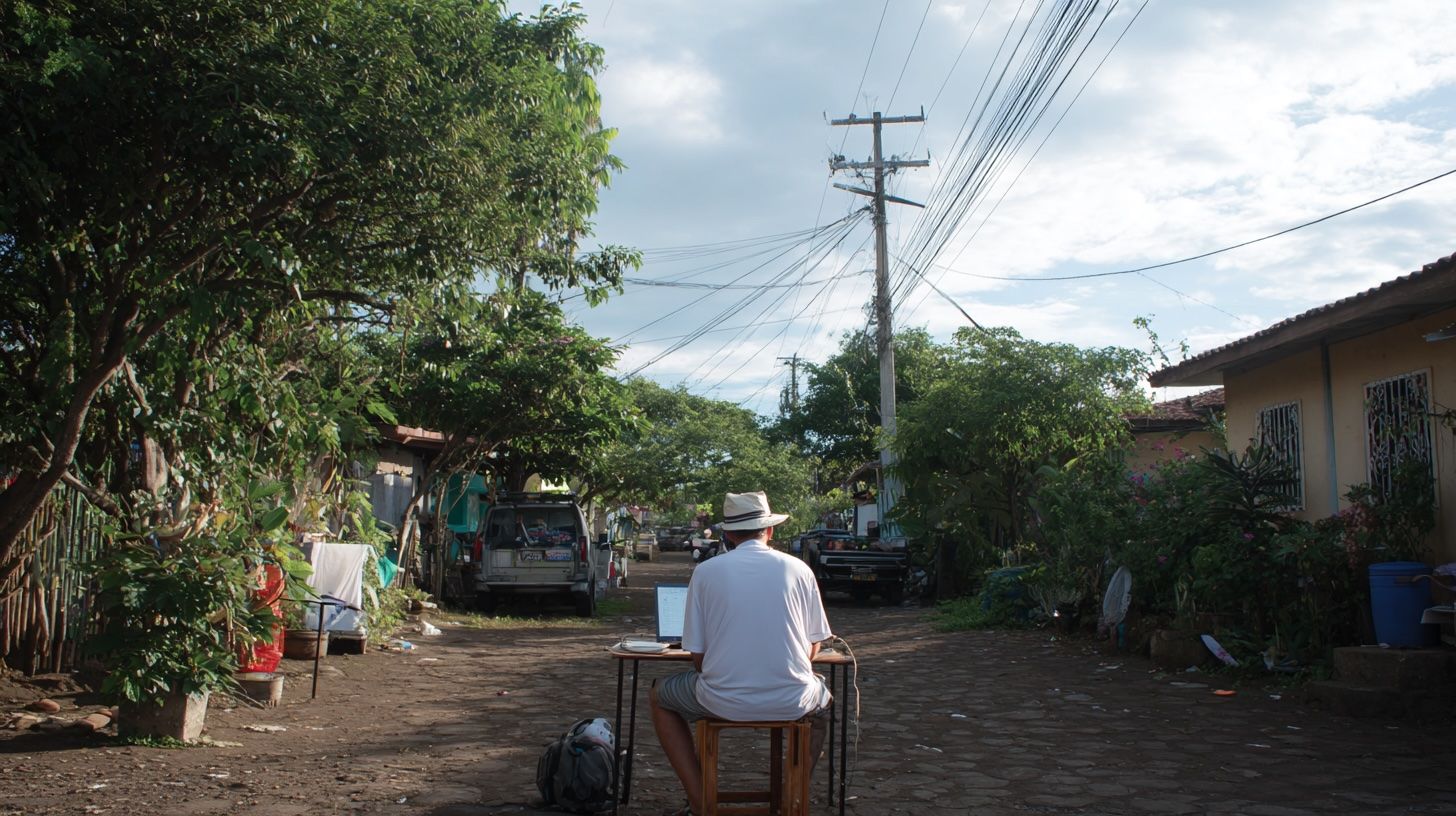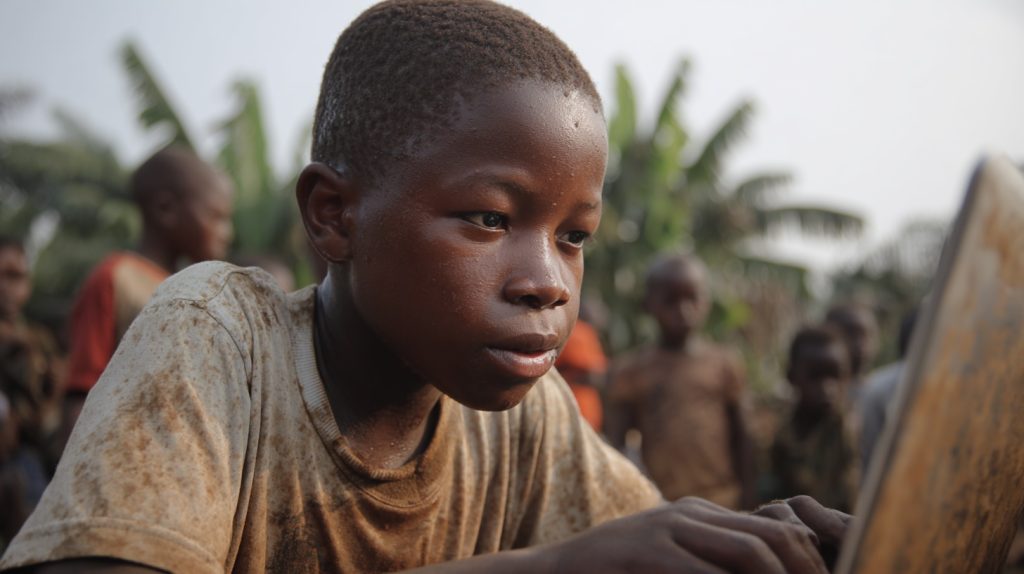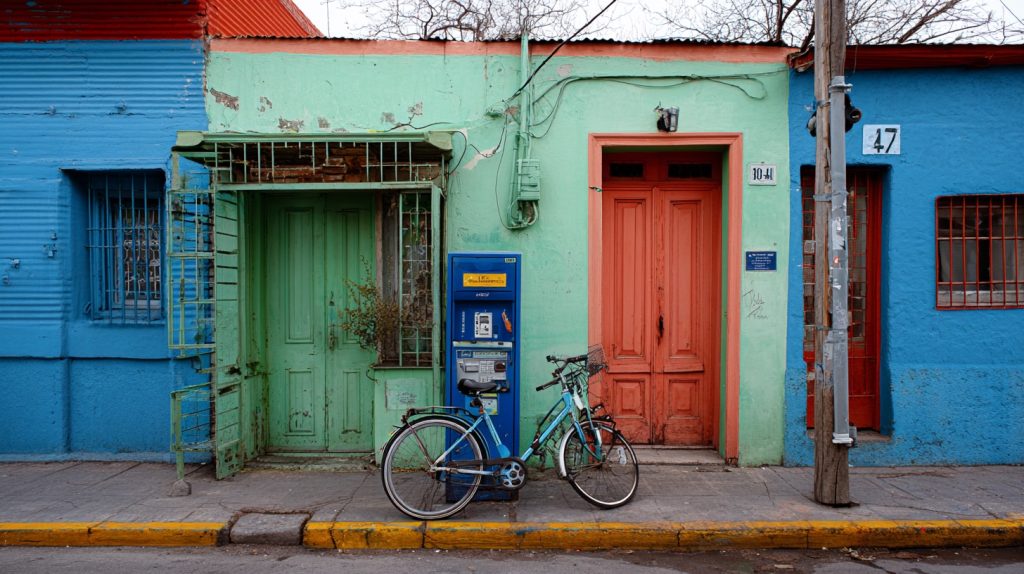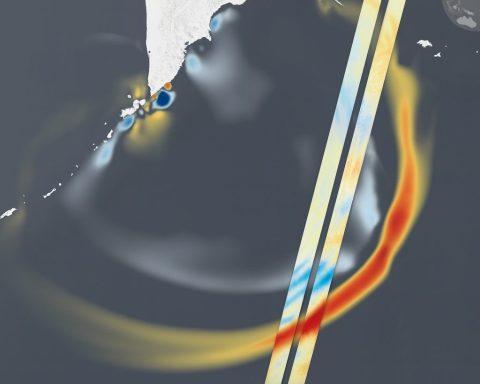- As of early 2025 Nicaragua had 8.71 million mobile connections, about 125% of the population, with more than 95% of lines capable of 3G/4G broadband.
- In January 2025, 4.47 million Nicaraguans used the internet, equal to 64.1% of the population.
- There were about 371,000 fixed broadband subscriptions in 2023, 5.43 per 100 people, with most lines in urban areas and fixed access below 6% nationwide.
- Since 2023 the government has activated free public Wi‑Fi hotspots in 25 parks, managed by TELCOR and municipalities.
- By 2023 about 87.4% of the population had 4G coverage and over 94% had 3G coverage, though rural gaps persist.
- Speed data show a median mobile download of 22.2 Mbps in January 2025 (about 35% higher than the previous year), while fixed broadband median speeds reached 67.5 Mbps by 2025.
- The market is a de facto duopoly of Claro and Tigo, which in 2023 reportedly split mobile market around 60/40, with Claro leading; Tecomunica announced its nationwide fixed internet plan in November 2022.
- Mobile data is inexpensive by regional standards at about $0.70 per 1 GB, and fixed broadband was around $36.99 per month in 2022, with minimum wages of $132–$296 per month, leaving many households still struggling.
- As of 2025 Starlink is not officially available in Nicaragua, being one of only two Central American countries (with Belize) where it is effectively banned, with customs seizing Starlink kits.
- IDB- and World Bank-backed programs connected 100 educational and research facilities and 149 health centers to broadband by 2020, enabling local examples like a Jinotega coffee cooperative selling online and Bluefields youth learning coding.
A young woman in Nicaragua helps an older adult use a tablet, symbolizing efforts to bridge the digital divide. Internet access is growing but remains uneven across generations and geographies.
Current State of Internet Access and Infrastructure
Nicaragua’s internet landscape is a study in contrasts. On one hand, mobile connectivity has surged in recent years: the country had 8.71 million mobile connections by early 2025 – equivalent to 125% of the population (many people use multiple SIMs) [1] [2]. Crucially, over 95% of these mobile lines are “broadband” (3G/4G capable) [3], reflecting telecom investments in 3G and 4G networks. In parallel, the number of Nicaraguans using the internet has climbed to 4.47 million (64.1% of the population) as of January 2025 [4]. This marks a dramatic increase from a mere 19.4% internet penetration in 2016 [5].
However, fixed broadband infrastructure remains nascent. There were only about 371,000 fixed broadband subscriptions in 2023, translating to 5.43 subscriptions per 100 people [6]. Most fixed lines are concentrated in urban areas, and nationwide household internet access is around 41.5% [7]. Fixed broadband penetration below 6% is among the lowest in Central America – by comparison, Costa Rica’s internet penetration is around 85% [8]. Public access points play an important role in connectivity: many Nicaraguans without home internet rely on cyber cafés or public Wi-Fi. The government has even activated free Wi-Fi hotspots in 25 public parks since 2023 to help “reduce the digital gap” [9]. These Wi-Fi zones, managed by the telecom regulator (TELCOR) and municipalities, underscore efforts to reach citizens who remain offline.
Mobile networks are the primary on-ramp to the internet for most Nicaraguans. Two operators dominate: Claro (América Móvil) and Tigo (Millicom). Mobile broadband (via 3G/4G) accounts for the bulk of internet use, with approximately 70.7 mobile broadband subscriptions per 100 people in 2023 (4.82 million active mobile data subscriptions) [10]. In practice, this means many people access online services through smartphones on cellular networks, as fixed lines or fiber have yet to reach their communities. The limited fixed broadband that does exist is largely DSL, cable, or fiber in Managua and a few major towns. Indeed, Nicaragua’s fixed broadband population penetration remains under 6% [11], whereas mobile internet is far more widespread (over 60% usage). This heavy reliance on mobile connectivity shapes the country’s digital experience, from streaming habits to e-government access.
Urban vs. Rural Coverage, Speed, and Quality
A stark urban–rural divide defines Nicaragua’s connectivity. In cities like Managua, León, or Granada, residents enjoy 4G coverage and even fiber in some neighborhoods, but remote rural villages often struggle with basic access. As of 2023, about 87.4% of the population was covered by 4G signals, and over 94% had at least 3G coverage [12] [13]. This means most Nicaraguans nominally live within reach of mobile internet. In reality, coverage gaps persist in mountainous areas and along the sparsely populated Caribbean (Mosquito) Coast. It’s estimated that between 71% and 89% of people in rural areas have no internet access at all [14] [15], due to both coverage and affordability issues. Telecom companies have been slow to invest in these low-density zones where returns are uncertain.
Where service exists, network quality varies by location. According to Ookla Speedtest data, the median mobile download speed was 22.2 Mbps in January 2025, a ~35% jump from the year prior [16]. Urban users with 4G reported much higher speeds than those in rural areas on 3G. For fixed broadband (mostly in cities), median download speed reached 67.5 Mbps by 2025, up 32% year-over-year [17]. These numbers indicate improving performance – Nicaragua’s average fixed speeds (≈67 Mbps) now even rank ahead of some neighbors like El Salvador [18]. Still, averages mask disparities: a handful of fiber-connected urban customers enjoy 100+ Mbps, while many rural users have to settle for 2G/EDGE or no signal at all. Latency on mobile networks also remains high (avg ~82 ms) [19], which can hamper video calls or online gaming, especially outside major coverage areas.
Quality of service is further challenged by infrastructure and power reliability. The electric grid has seen outages that in turn knock out cell towers and ISP networks – for instance, nationwide blackouts in 2021 disrupted internet service widely [20] [21]. Hurricanes are another threat; after Hurricane Iota in 2020, TELCOR reported downed fiber lines and towers that left parts of the country offline for days [22] [23]. Such events highlight the fragility of connectivity in the face of natural disasters.
Despite these issues, the user experience in major cities is steadily improving. A 2023 OpenSignal report found that in Managua and other population centers, Claro and Tigo’s 4G networks deliver fair video streaming and generally “Good” (if not great) quality for typical uses [24]. Claro leads on speed, winning OpenSignal’s awards for download (around 16 Mbps average) and upload, while Tigo had a slight edge in coverage reach [25] [26]. Notably, Tigo scored 7.1/10 vs. Claro’s 6.2/10 on a new coverage experience metric, meaning Tigo users could find a usable signal in a few more places [27]. However, both operators rated “Poor” for gaming experience due to latency [28]. These metrics confirm that within urban and peri-urban zones, mobile service is generally available and getting faster, but remote areas remain left behind – where reliable internet can still feel as elusive as a unicorn, as one observer quipped.
Major Telecom Providers and Infrastructure Players
Nicaragua’s telecom sector is essentially a duopoly. Claro, a unit of Mexico’s América Móvil, and Tigo, owned by Millicom, together account for the vast majority of mobile, broadband, and pay-TV subscriptions [29]. Claro (formerly Enitel) has long been the market leader, leveraging its legacy infrastructure and spectrum holdings. It provides mobile service nationwide and offers fixed broadband (DSL, cable, and some fiber) in cities – Claro has a clear lead in all telecom sectors, including about 55% of mobile and an even higher share of fixed lines, per industry analyses [30]. Tigo entered in 2019 by acquiring Telefónica’s Nicaragua operations and has been expanding its 4G network rapidly since. By 2023, Claro and Tigo were estimated to split the mobile market roughly 60/40(Claro/Tigo) and together serve nearly all internet customers, reflecting a de facto duopoly [31].
In recent developments, the government itself is eyeing a bigger role via a company called Tecomunica. Tecomunica is a joint venture partly owned by the state-run electric utility ENATREL (and Costa Rica’s ICE). In November 2022, it announced plans to offer fixed internet services nationwide, raising speculation that President Ortega’s government wants greater control over telecom infrastructure [32] [33]. Previously, Tecomunica was only involved in setting up Wi-Fi in public spaces, but its new mandate (coming on the heels of Ortega threatening higher taxes on private telcos) suggests an attempt to inject a state-linked competitor into the market [34] [35]. Observers noted the timing was “odd” and potentially a move to pressure Claro and Tigo or ensure the government can influence the sector more directly [36] [37]. How much market share Tecomunica will capture remains to be seen; as of 2025 it’s still ramping up its network.
Aside from the big two and Tecomunica, a couple of small ISPs operate at the margins. CooTel, a wireless broadband provider backed by Chinese firm Xinwei, and Yota (a 4G operator with Russian ties) both launched a decade ago. However, they hold only a “relatively small market share” and have limited impact [38]. Interestingly, a 2022 investigation revealed shareholders of CooTel and Yota have connections to the Ortega family [39]. This led to conjecture that the ruling family has indirect stakes in the telecom sector beyond formal state enterprises. Still, given these firms’ minor role, the telecom landscape remains firmly in the hands of Claro and Tigo – with the regulatory power in the hands of the government.
On the infrastructure side, Nicaragua has made strides thanks to public-private initiatives. Under the National Broadband Program (launched in 2016), ENATREL (the power utility) has been expanding a fiber-optic backbone network and telecom towers across the country [40]. With support from the World Bank and Inter-American Development Bank, this open-access backbone aims to bring high-capacity links to all 15 departments. By 2020, it had connected an additional 93 municipalities with high-speed broadband (out of 153 total municipalities) [41] [42]. The idea is that the government-built fiber backbone sells wholesale bandwidth to operators like Claro, Tigo, and local ISPs, who then deliver last-mile service to consumers [43]. At least 10 private operators have leased capacity on this network as of 2020 [44]. This model has also enabled targeted connectivity to public institutions – the IDB reports that the program financed last-mile links for 149 health centers and 100 educational/research facilities (e.g. agrarian institutes) by 2020 [45]. Such investments underscore that infrastructure deployment in Nicaragua often involves the state (via ENATREL/TELCOR) partnering with private telcos, especially to reach underserved areas.
Looking ahead, Nicaragua is even laying groundwork for 5G. TELCOR has cleared the 900 MHz band (previously used by older networks) to improve 4G coverage and is planning to allocate spectrum in the 3.5 GHz band for 5G when the time comes [46] [47]. These steps align with the government’s National Plan to Fight Poverty and for Human Development (2022–2026), which explicitly includes modernizing communications. However, actual 5G deployment is likely a few years off, given the 4G network itself still has gaps and the current economic constraints. For now, the focus is on consolidating 4G, extending fiber backbone, and possibly launching state-backed services to ensure competition (or government oversight, depending on one’s perspective).
Affordability and Digital Inclusion
Despite recent progress, internet access in Nicaragua remains a luxury for many due to cost and socio-economic factors. The good news is that prices have been trending downward. By 2022, the average monthly price of a fixed broadband plan was $36.99, which, perhaps surprisingly, was “among the lowest in the region” according to a global comparison [48] [49]. A few years prior, home internet in Nicaragua was among the most expensive in Central America, so this drop indicates greater competition and maybe regulatory pressure on prices. Mobile data is even more affordable: 1 GB of mobile data costs around $0.70 on average, the cheapest rate in Central America [50] [51]. This means a basic smartphone user can get online (albeit with limited usage) for well under $5 a month, which is critical in a country where incomes are low.
However, income levels and inequality put these prices in context. As of 2022, Nicaragua’s minimum wage ranged from C$4,724 to C$10,572 per month (approximately $132 to $296 USD) depending on the sector [52] [53]. Nearly half the workforce is underemployed or in informal jobs making even less [54]. At $37, a broadband plan could eat up 13–28% of a minimum wage earner’s monthly income [55] – still prohibitively high for many families. Even the cheap mobile data isn’t entirely “cheap” when $0.70/GB is weighed against low earnings and the fact that meaningful internet use (Zoom calls, online classes) might need tens of gigabytes. The cost of devices adds another barrier: a basic smartphone in 2020 cost roughly 34% of an average monthly income [56]. While handset prices have come down a bit since, a new smartphone is often a major expense, limiting internet adoption among low-income and rural populations.
These affordability challenges translate into a persistent digital divide. Roughly 36% of Nicaraguans remain offline in 2025 [57] [58], mostly in poorer, rural, and marginalized communities. There’s also a gender gap – surveys indicate women (especially in rural areas) are slightly less likely to use mobile internet, with an estimated 2.9% gender gap in mobile internet access [59] [60]. This gap, while smaller than in some developing countries, reflects factors like income disparity and cultural norms impacting women’s access to technology.
To tackle digital inclusion, various initiatives have been launched. The Nicaraguan government in the mid-2010s rolled out a project to install free Wi-Fi in municipal parks nationwide [61]. As noted, TELCOR recently highlighted Wi-Fi in 25 parks, and earlier reports say dozens more parks gained hotspots through a program by ENATREL and local governments [62]. These hotspots allow people (students, job seekers, etc.) to get online without charge, though they are mostly in town centers and don’t always reach remote villages. International aid and NGOs have also stepped in – for example, the IDB-backed Broadband Program not only built infrastructure but also updated the regulatory framework to foster competition and investment, aiming to make internet access more widespread and affordable [63] [64]. There are community initiatives too: in some rural areas, local organizations have set up small telecenters or provide shared satellite connections for villages, ensuring that even those without personal devices or cell coverage can occasionally connect.
Overall, while internet service now consumes a smaller share of household budgets than a few years ago, it is still “financially inaccessible for many” Nicaraguans [65] [66]. The combination of lower prices and modest income growth has improved affordability on paper, but poverty remains the biggest barrier to true universal access. Policymakers recognize this; closing the digital gap is often cited as key to development. For instance, over $20 million of public funds (with international loans) have been invested since 2017 to extend rural connectivity, and the government has even distributed some free or subsidized devices to low-income students (albeit in limited pilots). The hope is that as infrastructure expands and economies of scale improve, prices will drop further, enabling more Nicaraguans – regardless of income or location – to join the online world.
Internet Regulations and Government Policies
Internet access in Nicaragua does not exist in a political vacuum. The government of President Daniel Ortega has tightened its grip on telecommunications in tandem with a broader authoritarian turn since 2018’s civil unrest [67] [68]. TELCOR, the Nicaraguan Institute of Telecommunications and Postal Services, is the national regulator. By law it is meant to be an independent, decentralized entity, but in practice TELCOR “is essentially a government institution” beholden to presidential influence [69] [70]. Its leadership is closely aligned with the ruling party. Indeed, observers note that TELCOR has failed to uphold neutrality, often acting to advance the regime’s interests.
One notable policy is the Special Cybercrimes Law of 2020, a sweeping legislation that has serious implications for online freedom. This law criminalizes vaguely defined offenses such as spreading fake news or information that could “incite unrest”, and it grants TELCOR and the Foreign Ministry authority to “block websites, networks, applications, and other online services” deemed dangerous [71] [72]. While initially there was skepticism about the government’s technical capacity to enforce widespread internet filtering [73], recent actions suggest a growing assertiveness. In March 2025, the Ortega administration moved to block several independent media outlets’ websites under the country’s “.ni” domain [74]. This affected prominent news sites like Confidencial and La Prensa, which suddenly found their .ni domain names disabled. (These outlets had anticipated trouble and migrated to international domains – e.g., confidencial.digital – but the government’s maneuver cut off their old addresses [75] [76].) The .ni domain registry is managed by a state-run university, which carried out the block on government orders [77] [78]. This unprecedented step of censoring via the national DNS underscores the regime’s willingness to control internet content.
Data privacy and surveillance are another concern. In January 2021, TELCOR issued Administrative Agreement 001-2021, regulating data retention under the Cybercrimes Law. It requires telecom companies to collect and store detailed user metadata for up to 12 months [79] [80]. This includes records of communications (time, duration, recipient), types of service used (mobile, internet, fixed line), equipment identifiers, and even geolocation of devices [81]. Authorities (police or prosecutors) can request this data and, with a court order, compel telecoms to hand it over or even facilitate real-time interception [82]. Human rights groups have decried these regulations as threats to privacy lacking adequate safeguards [83] [84]. Nicaragua does have a 2012 Personal Data Protection Law on paper, but the oversight body it envisioned was never created, leaving users with little recourse [85] [86].
On the flip side, not all government policies are repressive; some are aimed at expansion and modernization of networks. The General Law of Telecommunications was updated in 2019 to modernize the framework for things like spectrum allocation and to oblige telcos to assist in surveillance (per a 2010 organized crime law) [87]. In practice, the Ortega administration has used carrots and sticks with the major telcos: offering incentives or threats. For example, as noted, in late 2022 Ortega floated raising taxes on Claro and Tigo around the same time the state’s Tecomunica announced its entry [88]. This could be interpreted as leverage to keep the dominant ISPs compliant. It’s worth mentioning that the First Lady (and Vice President) Rosario Murillo reportedly keeps close tabs on media and communications, and the telecom sector is no exception. Reports indicate that Ortega’s family or associates have stakes in smaller telecom companies (like those behind CooTel/Yota) [89], suggesting a desire to control the sector economically as well as politically.
Regionally, Nicaragua’s regulatory climate is seen as among the more interventionist in Central America. While countries like Costa Rica have liberalized telecom and have independent regulators, Nicaragua’s TELCOR stands out for ordering closures of outlets and being directly controlled by the executive. In 2022, TELCOR infamously revoked the licenses of 17 independent radio and TV stations (mostly church-run or opposition-leaning), effectively shutting them down [90]. Such actions, while not internet-specific, contribute to an environment where service providers know that dissent or non-compliance with government demands can have serious consequences. In summary, the policy landscape in Nicaragua is a double-edged sword: on one side, investments and programs to extend connectivity; on the other, increasing surveillance and content control. Navigating this frontier means balancing the drive for digital progress with the regime’s insistence on political control of the digital realm.
Key Challenges to Connectivity
Several formidable challenges hamper Nicaragua’s journey toward universal, high-quality internet access:
- Geographic and Infrastructure Challenges: Nicaragua is the largest country in Central America by land area, and its terrain poses hurdles. The population is spread across three distinct regions – the Pacific lowlands (where most cities are), the central highlands, and the Caribbean/Atlantic coast [91]. The Caribbean side (e.g. the vast lowland Mosquito Coast) is especially isolated; it has dense rainforests and minimal infrastructure. Running fiber or even maintaining cellular towers in these areas is difficult and costly. Until recently, the Atlantic coast had to rely on satellite backhaul for connectivity. Even now, the Caribbean Regional Communications Infrastructure Project – a World Bank initiative – is working to “fill key gaps in broadband connectivity on the Caribbean coast” [92], recognizing that conventional telco investment alone wasn’t reaching that region. Additionally, thousands of smaller villages in the interior lack reliable roads and electricity, making connectivity doubly challenging. While over 94% of Nicaraguans technically live under mobile coverage [93], coverage doesn’t equal quality – remote areas often have only weak 2G signals. Extending the network to the “last mile” – or rather the last many miles – of rural Nicaragua will require creative solutions (like community Wi-Fi, VSAT terminals, or cellular towers with satellite backhaul) given the geography.
- Economic Constraints: Nicaragua is one of the Western Hemisphere’s poorest countries, and this reality underlies much of the digital divide. Building out network infrastructure in low-income, sparsely populated areas doesn’t make obvious commercial sense for private operators. As Freedom House succinctly noted, “connectivity in rural areas is low, partly because it is not profitable for service providers to develop infrastructure there.” [94] [95]. The government’s broadband program, backed by development banks, has tried to mitigate this by funding backbone and letting telcos piggyback cheaply. Still, maintenance of networks in remote areas (keeping towers fueled, fiber repaired, etc.) is an ongoing cost that cash-strapped operators struggle with. On the user side, poverty limits demand for internet – a large segment of the population is worried about basic needs first, which reduces the consumer base that would justify network expansion. This creates a vicious cycle: low incomes lead to low demand, which leads to low investment in coverage, which in turn keeps those communities economically stagnant and offline. Breaking this cycle is a core challenge for Nicaragua’s digital development.
- Political and Regulatory Hurdles: As discussed, Nicaragua’s regime exerts heavy control over telecommunications. While this has not manifested in, say, outright internet shutdowns (as seen in some other authoritarian countries), the climate could deter external investment and technological innovation. For instance, SpaceX’s Starlink service has not been approved by Nicaragua’s authorities – effectively a political decision when every neighboring country except Belize has welcomed it. Customs officials have seized Starlink kits at the border to enforce the ban [96] [97]. This stance likely stems from the government’s desire to oversee all communications; a freely operating satellite internet service beyond state control is seen as a threat. Thus, a potentially game-changing connectivity solution for rural areas is kept out by regulation, at least for now. More broadly, the lack of regulatory independence (TELCOR’s politicization) means policies may favor political objectives over consumer benefits or fair competition.
- Energy and Climate Resilience: Reliable internet needs reliable power and resilient infrastructure. Nicaragua’s electricity grid, especially in rural zones, suffers from outages. Something as mundane as a seven-hour local blackout can knock out cell sites and Wi-Fi for the duration [98]. The country is also prone to hurricanes (e.g., 2020’s Iota and Eta) which can wipe out network infrastructure overnight [99]. Building climate-resilient networks – burying cables, hardening towers, deploying backup power – is expensive but necessary. Telecom operators have begun using solar panels and battery backups on rural towers to cope with power issues, and the government has pushed rural electrification which indirectly helps telecom too. But the next hurricane or quake will continue to test the robustness of Nicaragua’s digital backbone.
In summary, Nicaragua’s connectivity challenges span the physical, economic, and political realms. Any one of these would be significant on its own; together, they complicate efforts to bring the entire population online. The government acknowledges many of these hurdles in its national plans, at least rhetorically. The key will be whether stakeholders can collaboratively address them – for instance, using satellite and wireless innovations to overcome geography, smart subsidies or community networks to overcome low incomes, and diplomacy to ensure technology isn’t stifled by politics. The truth on the ground is that progress is happening, but slowly, and the hardest-to-reach Nicaraguans are still waiting for the digital revolution to include them.
Developments in Satellite Internet: Starlink, HughesNet, Viasat, and Beyond
One technology that could leapfrog some of Nicaragua’s connectivity problems is satellite internet. In fact, satellites have quietly contributed to Nicaraguan telecom for years: legacy providers like HughesNet and Viasat (via geostationary satellites) have offered service in the country, primarily targeting businesses, government, or remote communities willing to pay. These traditional VSAT connections use dishes – requiring only power and a clear view of the sky – to deliver broadband anywhere, regardless of terrain [100] [101]. The downside has been high latency (around 600-800 ms) and limited data capacity, making them less ideal for real-time applications. Nonetheless, they have been vital in areas with “little or no internet connectivity” by effectively beaming in a Wi-Fi hotspot from space [102]. For example, Viasat in the past deployed Community Internet hotspots in parts of rural Central America, where a shared VSAT link provides a village with a Wi-Fi zone for online access [103] [104]. Nicaragua could, in theory, benefit from such models if implemented widely.
Thus far, HughesNet (through local distributors) and some regional VSAT integrators do operate in Nicaragua – you can find companies advertising satellite broadband plans for rural Nicaraguans. In one notable project, global satellite firm Hughes partnered with Speedcast in 2019 to deploy nearly 100 satellite terminals to expand 3G/4G cellular service in Nicaragua [105]. In that case, the satellites provided backhaul connectivity to cell towers in remote areas, effectively allowing mobile operators to extend coverage without fiber. This kind of satellite-cellular integration is a clever way Nicaragua has improved rural coverage (many of those 647,000 people who got 4G via the IDB program likely benefited from such backhaul links).
The big buzz in satellite internet today, however, comes from Low Earth Orbit (LEO) constellations – most famously, SpaceX’s Starlink. Unlike the old geostationary satellites, LEO constellations fly much closer to Earth, enabling fiber-like speeds (50–200 Mbps) and low latency (~20–50 ms). Starlink’s promise is particularly enticing for a country like Nicaragua: it can “beam high-speed connectivity from space to places where cables don’t go”, turning a jungle cabin or island hamlet into an office with a simple dish and router [106] [107]. In Central America, Starlink has rapidly gone live in countries such as Costa Rica, Panama, Honduras, Guatemala, and El Salvador in 2023–2024 [108] [109]. Monthly plans around $50–$80 for ~100 Mbps are common in those markets, and hardware costs ~$200–$350 for the dish (significantly subsidized compared to U.S. prices) [110] [111]. Many rural schools, eco-lodges, and farms in those countries have jumped at Starlink as a game-changer.
Yet, Nicaragua stands out as a holdout. As of 2025, Starlink is not officially available in Nicaragua – one of only two countries in Central America (the other being Belize) where it’s effectively banned [112] [113]. The Ortega government has not approved Starlink’s license application, and it appears keen to prevent unregulated use. Customs authorities have confiscated Starlink kits entering Nicaragua, as one unlucky expat discovered when trying to bring in the equipment [114]. Some tech-savvy individuals have reportedly smuggled in Starlink “RV” dishes (designed for roaming) or used units registered in neighboring countries, but these are underground and risky solutions [115] [116]. Even when clandestine Starlink units are activated, SpaceX’s policy cuts off roaming terminals after a couple of months in an unsupported country, so it’s hardly a stable fix [117] [118]. In short, Starlink could fill Nicaragua’s rural connectivity void, but regulatory walls currently keep it out [119]. The government’s motives likely include control over communications and deference to the state-aligned telco ecosystem. Local ISPs also might view Starlink as competition, but in most countries incumbents have coexisted with it by focusing on urban markets while Starlink serves the remote niches.
A long-exposure photo captures a “train” of SpaceX Starlink satellites crossing the Nicaraguan night sky. Starlink promises fast, low-latency internet from space – a potential lifeline for rural areas – but Nicaragua’s government has yet to authorize its use. [120] [121]
It’s worth noting that other satellite players are on the horizon too. OneWeb, a UK-based LEO constellation, and Amazon’s Project Kuiper (planning to launch in late 2025) both aim to serve markets like Latin America. Nicaragua could benefit from these if they enter service and if the government permits their operation (perhaps via partnerships with state entities). For now, older GEO satellites (Hughes, Viasat) remain the legally accessible satellite options. They continue to serve niche needs – for instance, banks often use VSATs as backups for connectivity, and some remote clinics or NGO outposts use HughesNet for email/web access. But these services are comparatively expensive (often $100+ per month for modest speeds) and technically limited.
The future outlook for satellite internet in Nicaragua hinges on policy change. If Managua’s authorities “play ball,” Belize and Nicaragua might finally join the Starlink party in the coming years [122] [123]. There are hints of hope: Starlink’s coverage map already shows Nicaragua under “pending regulatory approval” rather than a gray void, implying discussions are at least on the table. With thousands more satellites being launched (Starlink alone now 5,000+ and aiming for 42,000) [124] [125], the cost and availability of satellite broadband will improve. From a development standpoint, welcoming LEO satellite services could be transformative – imagine every isolated school, farm, or island in Nicaragua getting a 100 Mbps link overnight simply by installing a dish. It would bypass years of waiting for fiber or towers. Of course, it would also bypass government-controlled networks, which is the crux of the issue.
In summary, satellite connectivity sits at Nicaragua’s frontier – technologically ready to bridge the gap, but awaiting political clearance. Companies like Hughes and Viasat have laid groundwork by connecting the unconnected in small numbers, proving the concept. The arrival of Starlink (and similar LEO constellations) ups the ante with far superior performance. For underserved Nicaraguan communities, these satellites represent a beacon of hope. For now, that beacon is just visible in the night sky – a train of moving stars – but not yet accessible on the ground.
Impact on Education, Healthcare, and Economic Opportunity
The digital divide in Nicaragua has very human consequences. In education, the pandemic starkly exposed connectivity gaps: as schools shifted to online learning, many students simply couldn’t log on. Over half of primary school children and more than 80% of secondary students lacked internet access at home during recent years [126]. This has resulted in significant learning losses, particularly in rural areas. Some stop-gap measures were tried – educational radio and TV broadcasts, delivering USBs with materials – but without two-way connectivity, many students were left behind. Connecting schools is therefore a priority. The government, with support from partners, has connected dozens of schools (often via the fiber backbone or satellite links) [127]. By 2020, as noted, 100 educational and research facilities (including universities and technical institutes) gained broadband through the IDB-funded program [128]. Anecdotally, where a school gets internet, it often becomes a community hub – teachers invite parents and children to use the connection in off hours for research or to download learning resources. Moving forward, satellite internet could play a role in the most remote schools that still lack service; a single Starlink or VSAT could connect a small village school to the world, enabling e-learning, educational videos, and communication with teachers elsewhere.
In healthcare, connectivity is increasingly vital for improving outcomes. Nicaragua has a decentralized public health system with many rural clinics and a few regional hospitals. Prior to improved internet, a doctor in a village might have no way to consult a specialist or quickly access up-to-date medical information. Now, thanks to projects that linked 149 health centers via broadband [129], there are examples of telemedicine starting to take root. For instance, a clinic in the Río San Juan department with internet can now transmit test results to Managua or have a video call with a specialist at a central hospital, rather than sending a patient on a 10-hour bus ride. During COVID-19, connectivity at hospitals helped with case reporting and accessing treatment protocols (though overall internet-based telehealth was limited by the lack of patient-side connectivity). In remote indigenous communities on the Caribbean coast, some NGOs have used satellite phones or internet to coordinate emergency evacuations and share health data – something unheard of a decade ago. Simply put, better internet in clinics and hospitals means faster, more accurate care for patients who previously were isolated. It also helps retain healthcare workers in rural areas, since they don’t feel as professionally cut-off.
For the economy, internet access is a catalyst for opportunity. In urban areas, improved broadband has allowed a small but growing tech and outsourcing sector to flourish. Managua now has call centers and outsourcing companies that rely on stable internet – contributing to the services sector growth (which helped GDP rise 4.6% in 2023) [130] [131]. On a micro level, entrepreneurs leverage social media and WhatsApp for business; for example, farmers use Facebook Marketplace to sell produce, and artisans in Masaya use Instagram to reach tourists abroad. These ventures require connectivity – and where it’s available, people adapt quickly. E-commerce and digital finance are also expanding: mobile money services exist, although their adoption is limited by internet access outside cities.
The rural economy stands to benefit immensely if connectivity improves. Small farmers could check market prices online, access weather forecasts, or learn new techniques via YouTube – all of which can improve productivity and income. Communities with internet can develop local ecotourism (marketing via web platforms) or remote work hubs for their youth. There are already anecdotes: one coffee cooperative in Jinotega got a satellite link and started selling coffee directly to overseas buyers via an online portal, bypassing middlemen. In another case, a group of youth in Bluefields (on the Atlantic coast) learned coding online and are now doing freelance software gigs – something only possible because a local NGO provided a community internet center. Such stories illustrate the transformative potential of connectivity: it can enable education and jobs without forcing people to migrate to the capital.
On the flip side, lacking internet can deepen inequalities. Regions without connectivity risk falling further behind economically and socially. This is why comparisons are often made to roads and electricity – internet is seen as the new essential infrastructure for development. The Nicaraguan government often cites SDG (Sustainable Development Goal) 9 – Industry, Innovation and Infrastructure – in context of its broadband efforts [132]. The logic is that improving ICT infrastructure will spur innovation and inclusion. Independent observers agree: studies have shown that a 10% increase in broadband penetration can boost GDP growth, and while Nicaragua is just at the start of that curve, every additional percentage point of internet users likely adds to economic output and resilience.
One cannot ignore the political dimension: improved connectivity also empowers civil society and enables access to information. For citizens, the internet has become a key space for the free exchange of ideas (insofar as censorship allows) and for staying informed – especially given government control of traditional media. This has social implications beyond economics – it can strengthen communities, improve governance through increased transparency, and connect Nicaraguans with the diaspora abroad. All these impacts – educational, health, economic, social – reinforce the same point: internet access is not just about convenience, it’s about opportunity. Every new broadband connection in Nicaragua has a ripple effect – a child who can study, a patient who gets better care, a farmer who earns a better living, a citizen who can speak up. Thus, closing the connectivity gap is fundamental to Nicaragua’s human and economic development.
Regional Benchmarking: Nicaragua vs. Central American Neighbors
When stacked against its Central American peers, Nicaragua’s digital metrics reflect both its struggles and some recent gains. It has historically trailed the region in internet penetration – for instance, a few years ago it was noted as having the least internet access in Central America (only about 20% of people online) [133]. Today, with ~64% internet usage, Nicaragua has caught up somewhat, even surpassing Honduras and Guatemala in some indicators. World Bank data for 2023 show Honduras at about 58% internet users [134] and Guatemala around 56% [135]. Nicaragua now sits in the middle of the pack, below Costa Rica (~85–90%) [136]and Panama (around 75% per estimates), roughly on par with El Salvador (~65–70%), and slightly above Honduras/Guatemala. This is a notable improvement given Nicaragua’s past lag.
In terms of broadband quality and coverage, Nicaragua also isn’t the worst but has room to improve. Fixed broadband coverage (5.4 subscriptions per 100 people) [137] is similar to Guatemala’s 5.1 per 100 [138] and Honduras’s ~4–5 per 100, but far behind Costa Rica (which has well over 15 per 100, thanks to extensive fiber). Mobile broadband (3G/4G) coverage in Nicaragua – 87% 4G population coverage [139] – is actually not far off neighbors (El Salvador and Panama report ~90–95% 4G coverage). However, Nicaragua’s rural coverage is likely the lowest. A metric from GSMA’s Mobile Connectivity Index gave Nicaragua a Coverage score of 82.4 (out of 100), which is behind the regional average and reflects those remaining uncovered pockets [140] [141].
In terms of speed, Nicaragua’s mobile speeds (~22 Mbps median) are a bit lower than the global average but comparable to neighbors – for example, Honduras and Guatemala have seen mobile medians in the 15–25 Mbps range too. On fixed broadband, Nicaragua’s median ~67 Mbps actually outpaced El Salvador’s ~60-70 Mbps [142] and isn’t far behind Panama’s. This is likely because Nicaragua’s small base of fixed broadband users are concentrated on the best technologies (fiber or cable in cities), skewing the speeds up. For instance, in Costa Rica, fiber uptake is about 40% of fixed lines which yields high averages [143]; Nicaragua is now starting to see a similar effect in Managua.
Affordability is one area where Nicaragua surprisingly leads: as mentioned, mobile data is cheapest in the region in USD terms [144]. But this comes with a caveat – prices are low partly because people have very limited ability to pay. Other countries might have higher nominal prices but also higher incomes or data bundles. On a value-for-money basis, Nicaragua is competitive; 1 GB per $0.70 is better than, say, Guatemala ($1+ per GB) or Costa Rica ($1.5 per GB). The challenge is ensuring Nicaraguans can afford the smartphones and the consumption of multiple gigabytes.
Regional initiatives and integration: Nicaragua participates in some Central American digital agendas (e.g., SICA discussions on regional fiber interconnection), but its more insular politics can be a barrier. For instance, other countries have joined the Alliance for Affordable Internet or similar forums more actively than Nicaragua. The country did engage in the Caribbean Regional Communications Infrastructure Program to connect its Caribbean coast alongside eastern neighbors, highlighting that when it comes to connectivity, geography can trump politics in forging partnerships [145].
Finally, in Freedom of the Net rankings, Nicaragua is unfortunately an outlier. Freedom House’s 2023 report gave Nicaragua an internet freedom score of 42/100 (“Partly Free”) [146], declining from prior years. This is considerably lower than, say, Costa Rica which is rated Free and one of the most open internet environments in Latin America [147]. It is roughly on par with Honduras and Guatemala’s “partly free” status, but Nicaragua’s trajectory is downward. This matters in a regional context because a freer internet often correlates with a more vibrant digital economy and civil society. If Nicaragua wants to emulate the success of neighbors like Costa Rica in tech and BPO industries, it may need to ensure a more open and innovation-friendly internet space.
In summary, Nicaragua’s digital frontier is still a step behind the Central American average, but it is no longer the extreme outlier it once was. Rapid growth in mobile internet use has narrowed the gap. The country now faces the task of moving from expansion to maturation: improving quality, extending access to the hardest parts, and leveraging connectivity for development – all while catching up to regional standards in openness and innovation. The benchmark comparisons show both the achievements (e.g., cost reductions, 4G rollout) and the deficits (e.g., rural gaps, low fixed broadband) that Nicaragua must address as it ventures forward in the digital age.
Conclusion and Outlook
Nicaragua stands at a critical juncture on its digital frontier. Over the past decade, it has transformed from a nation of dial-up and patchy 2G into one where most citizens have a mobile phone and a growing majority can access the internet in some form. The truth about internet access in Nicaragua is that while significant progress has been made – new fiber backbones laid, 4G towers raised, prices lowered – there remains a tale of two Nicaraguas: one connected, largely urban and gradually prospering; the other still disconnected, largely rural and left behind. Bridging this divide will require sustained effort, smart policy, and embracing innovative solutions like satellite broadband rather than shunning them.
The coming years could be pivotal. If the government continues investing in infrastructure (as outlined in its national development plans) and perhaps softens its stance to allow global satellite services, Nicaragua could leap ahead in connectivity. Imagine a future where a farmer in Nueva Guinea, a student in a remote Caribbean village, and an entrepreneur in Estelí all enjoy reliable broadband – whether delivered by fiber, 5G, or a Starlink satellite dish – and can fully participate in the digital economy. This would boost not just individual livelihoods but the country’s overall resilience and growth.
However, realizing that vision means tackling the challenges discussed: making internet truly affordable by raising incomes and maybe subsidizing access for the poorest, continuing to push broadband into every municipality (the goal should be all 153 municipalities online, up from 93 in 2021 [148]), and ensuring that connectivity comes with digital literacy and inclusion programs so that access translates to actual empowerment. Importantly, the government’s approach to regulation will greatly influence outcomes. A regulatory environment that encourages competition, transparency, and openness will attract investment and innovation – whereas one that is overly restrictive or politicized may slow down the digital momentum.
From a regional perspective, Nicaragua has the opportunity to learn from its neighbors’ successes and missteps. Costa Rica’s universal access programs, Panama’s public Wi-Fi, El Salvador’s adoption of new tech like Bitcoin ATMs (enabled by internet), and Honduras’s experience with community internet hubs all offer valuable insights. At the same time, Nicaragua can perhaps leapfrog in areas like satellite internet, avoiding some infrastructural delays by harnessing the sky. The technology is no longer the limiting factor; human decisions are.
In conclusion, Nicaragua’s digital frontier is one of promise tempered by reality. The country has come a long way in improving internet access, and new chapters – like the introduction of LEO satellite connectivity or 5G networks – are on the horizon. The truth is that internet access in Nicaragua is not just about cables and signals; it’s about people and opportunities. It’s about that rural doctor who can save a life because she consulted online, the student who can finally take an online course, the farmer who doubles his income by cutting out middlemen via a digital marketplace, and the journalist who can reach readers despite censorship by moving to a .digital domain. Each gain in connectivity ripples through society.
As Nicaragua navigates this frontier, the country must continue investing wisely, embracing collaboration (both domestic and international), and above all putting its people’s needs at the center of digital development. The challenges are significant, but so is the resilience and creativity of Nicaraguans. With the right mix of technology, policy, and perseverance, Nicaragua can ensure that the benefits of the internet reach every corner of the “land of lakes and volcanoes,” propelling it toward a more connected and prosperous future for all.
Sources: Nicaragua telecom statistics and reports [149] [150] [151] [152] [153]; Freedom House and regulatory analysis [154] [155] [156]; IDB and World Bank project data [157] [158]; Central America Starlink status [159] [160]; regional comparisons [161] [162].
References
1. datareportal.com, 2. datareportal.com, 3. datareportal.com, 4. datareportal.com, 5. www.bcsatellite.net, 6. dig.watch, 7. dig.watch, 8. www.statista.com, 9. www.tiktok.com, 10. www.statista.com, 11. dig.watch, 12. dig.watch, 13. dig.watch, 14. freedomhouse.org, 15. freedomhouse.org, 16. datareportal.com, 17. datareportal.com, 18. en.wikipedia.org, 19. dig.watch, 20. freedomhouse.org, 21. freedomhouse.org, 22. freedomhouse.org, 23. freedomhouse.org, 24. www.opensignal.com, 25. www.opensignal.com, 26. www.opensignal.com, 27. www.opensignal.com, 28. www.opensignal.com, 29. freedomhouse.org, 30. www.businesswire.com, 31. freedomhouse.org, 32. freedomhouse.org, 33. freedomhouse.org, 34. freedomhouse.org, 35. freedomhouse.org, 36. freedomhouse.org, 37. freedomhouse.org, 38. freedomhouse.org, 39. freedomhouse.org, 40. crf.iadb.org, 41. freedomhouse.org, 42. crf.iadb.org, 43. crf.iadb.org, 44. crf.iadb.org, 45. crf.iadb.org, 46. www.opensignal.com, 47. www.opensignal.com, 48. freedomhouse.org, 49. freedomhouse.org, 50. freedomhouse.org, 51. freedomhouse.org, 52. freedomhouse.org, 53. freedomhouse.org, 54. freedomhouse.org, 55. freedomhouse.org, 56. freedomhouse.org, 57. datareportal.com, 58. datareportal.com, 59. dig.watch, 60. dig.watch, 61. freedomhouse.org, 62. freedomhouse.org, 63. crf.iadb.org, 64. crf.iadb.org, 65. freedomhouse.org, 66. freedomhouse.org, 67. freedomhouse.org, 68. freedomhouse.org, 69. freedomhouse.org, 70. freedomhouse.org, 71. freedomhouse.org, 72. freedomhouse.org, 73. freedomhouse.org, 74. confidencial.digital, 75. confidencial.digital, 76. confidencial.digital, 77. confidencial.digital, 78. confidencial.digital, 79. freedomhouse.org, 80. freedomhouse.org, 81. freedomhouse.org, 82. freedomhouse.org, 83. freedomhouse.org, 84. freedomhouse.org, 85. freedomhouse.org, 86. freedomhouse.org, 87. freedomhouse.org, 88. freedomhouse.org, 89. freedomhouse.org, 90. cpj.org, 91. www.bcsatellite.net, 92. www.bcsatellite.net, 93. dig.watch, 94. freedomhouse.org, 95. freedomhouse.org, 96. www.centralamerica.com, 97. www.centralamerica.com, 98. freedomhouse.org, 99. freedomhouse.org, 100. www.bcsatellite.net, 101. www.bcsatellite.net, 102. www.lightreading.com, 103. www.lightreading.com, 104. www.lightreading.com, 105. www.hughes.com, 106. www.centralamerica.com, 107. www.centralamerica.com, 108. www.centralamerica.com, 109. www.centralamerica.com, 110. www.centralamerica.com, 111. www.centralamerica.com, 112. www.centralamerica.com, 113. www.centralamerica.com, 114. www.centralamerica.com, 115. www.centralamerica.com, 116. www.centralamerica.com, 117. www.centralamerica.com, 118. www.centralamerica.com, 119. www.centralamerica.com, 120. www.centralamerica.com, 121. www.centralamerica.com, 122. www.centralamerica.com, 123. www.centralamerica.com, 124. www.universiteitleiden.nl, 125. www.universiteitleiden.nl, 126. salesianmissions.org, 127. crf.iadb.org, 128. crf.iadb.org, 129. crf.iadb.org, 130. www.worldbank.org, 131. www.worldbank.org, 132. crf.iadb.org, 133. www.privacyshield.gov, 134. tradingeconomics.com, 135. data.worldbank.org, 136. datareportal.com, 137. dig.watch, 138. tradingeconomics.com, 139. dig.watch, 140. dig.watch, 141. dig.watch, 142. en.wikipedia.org, 143. crie.cr, 144. freedomhouse.org, 145. www.bcsatellite.net, 146. freedomhouse.org, 147. freedomhouse.org, 148. freedomhouse.org, 149. dig.watch, 150. dig.watch, 151. datareportal.com, 152. freedomhouse.org, 153. www.centralamerica.com, 154. freedomhouse.org, 155. freedomhouse.org, 156. confidencial.digital, 157. crf.iadb.org, 158. www.bcsatellite.net, 159. www.centralamerica.com, 160. www.centralamerica.com, 161. www.statista.com, 162. tradingeconomics.com










